Rate Comparison
How do our Electric rates compare?
The deregulated areas of Texas cover about 85 percent of the state. So where does this leave the 15 percent of the state that is exempt from this system for buying and selling electricity? In the case of CoServ, an electric cooperative, the answer is: In good hands.
Our Members deserve reasonable and stable electric rates. Conversely, the mission of Retail Electric Providers (REPs) in the deregulated market is to generate investor profit. CoServ has no shareholders, and our responsibility is to our Members. Our Standard Residential Rate stays competitive with the 12-month fixed prices that REPs offer
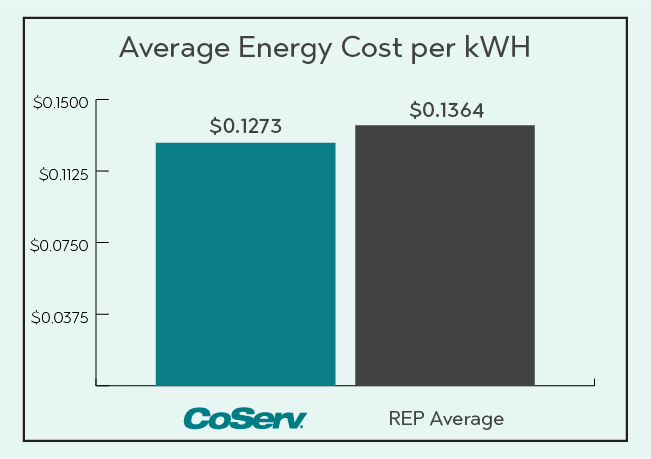

CoServ Rates Stay Consistent
Not only does CoServ work hard to ensure our Members' rates stay competitive, but we also keep our rates stable, as shown below in this 13-month graph.
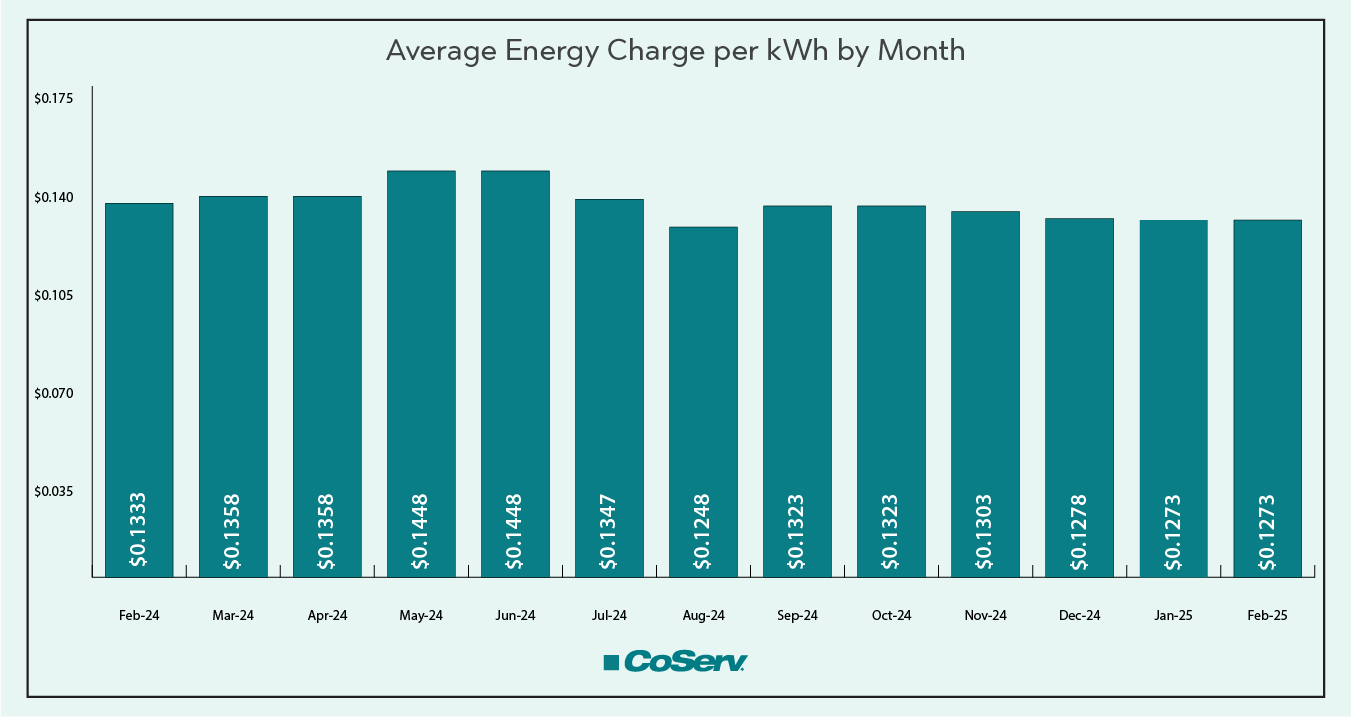 Graph shows the monthly energy charge, which includes the PCRF and SCRF.
Graph shows the monthly energy charge, which includes the PCRF and SCRF.
How is my electric bill calculated?
The CoServ Standard Residential Rate has four main parts.
First, there's the Energy Charge, which is a per-kilowatt charge that stays the same from month-to-month. This includes delivery, generation and distribution costs for electricity.
The second part is called the Power Cost Recovery Factor (PCRF). Wholesale electricity charges fluctuate from month-to-month, typically mirroring the price of natural gas. CoServ accounts for these fluctuations by adjusting the PCRF up or down. When the PCRF is negative, as it has been for the majority of the last several years, it is subtracted from the Base Rate. When the PCRF is positive, it is added to the Base Rate, increasing Energy Charge paid by the Members.
The third part is the Customer Charge, which is a fixed cost that allows CoServ to recover costs such as wires, poles, and other infrastructure.
The fourth and final component of the bill is the Securitized Charge Recovery Factor (SCRF). Click here to learn more about how your bill is calculated.

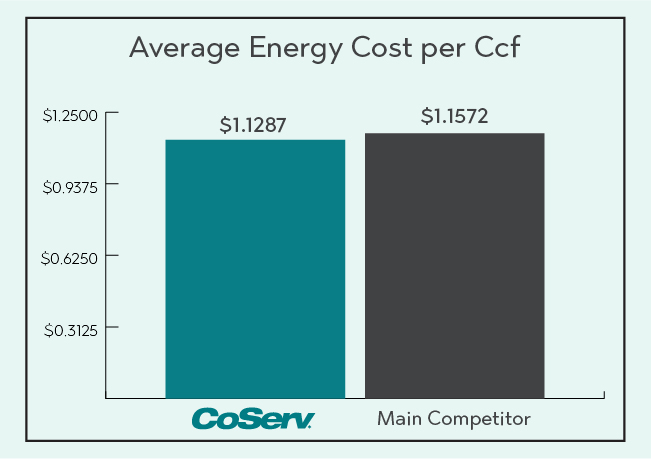
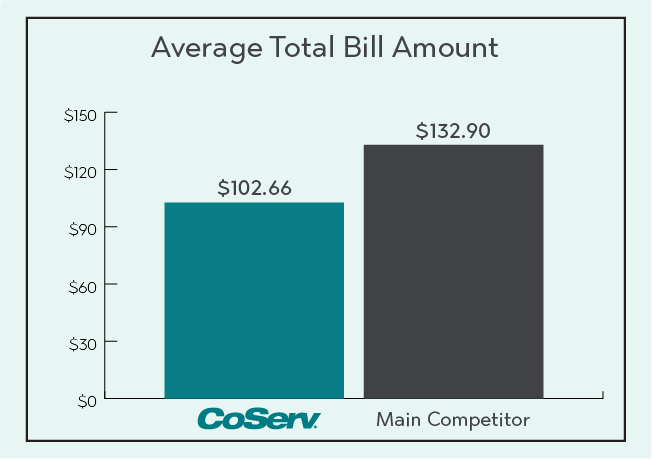
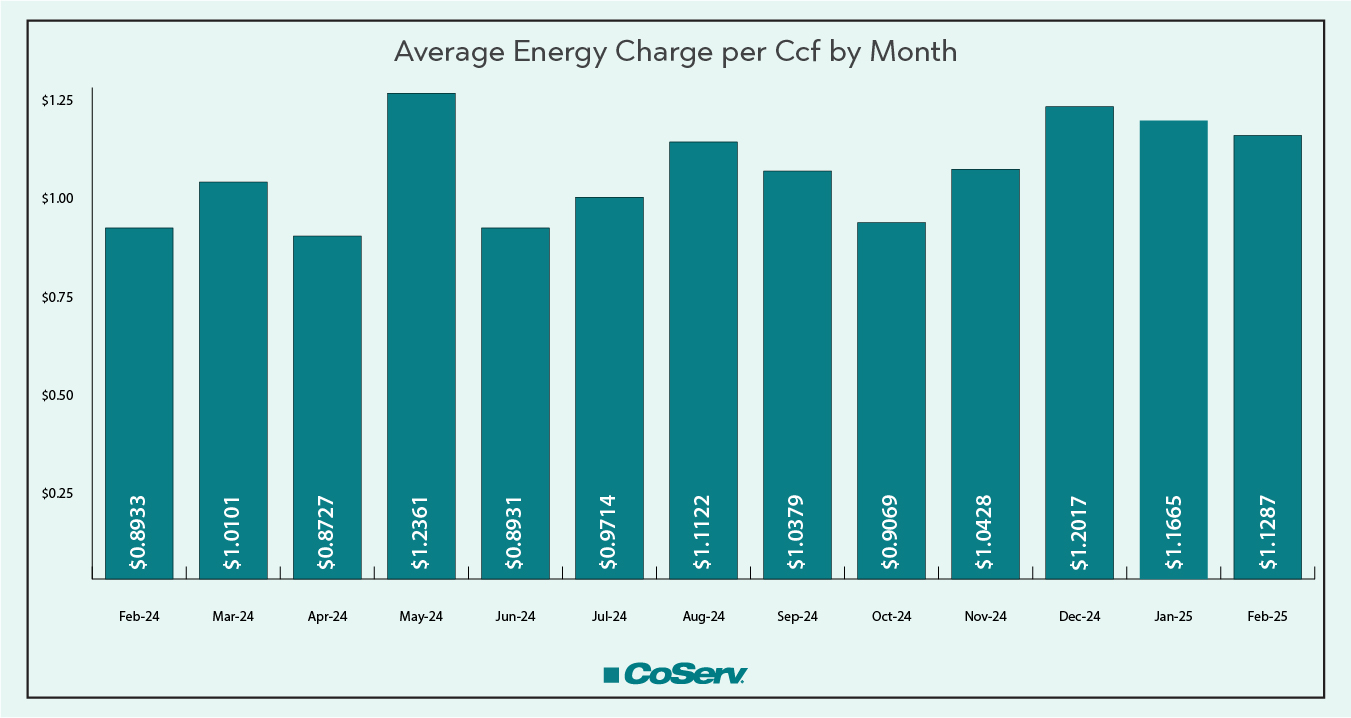 Graph shows the monthly energy charge, which includes the PGF and WNA.
Graph shows the monthly energy charge, which includes the PGF and WNA.